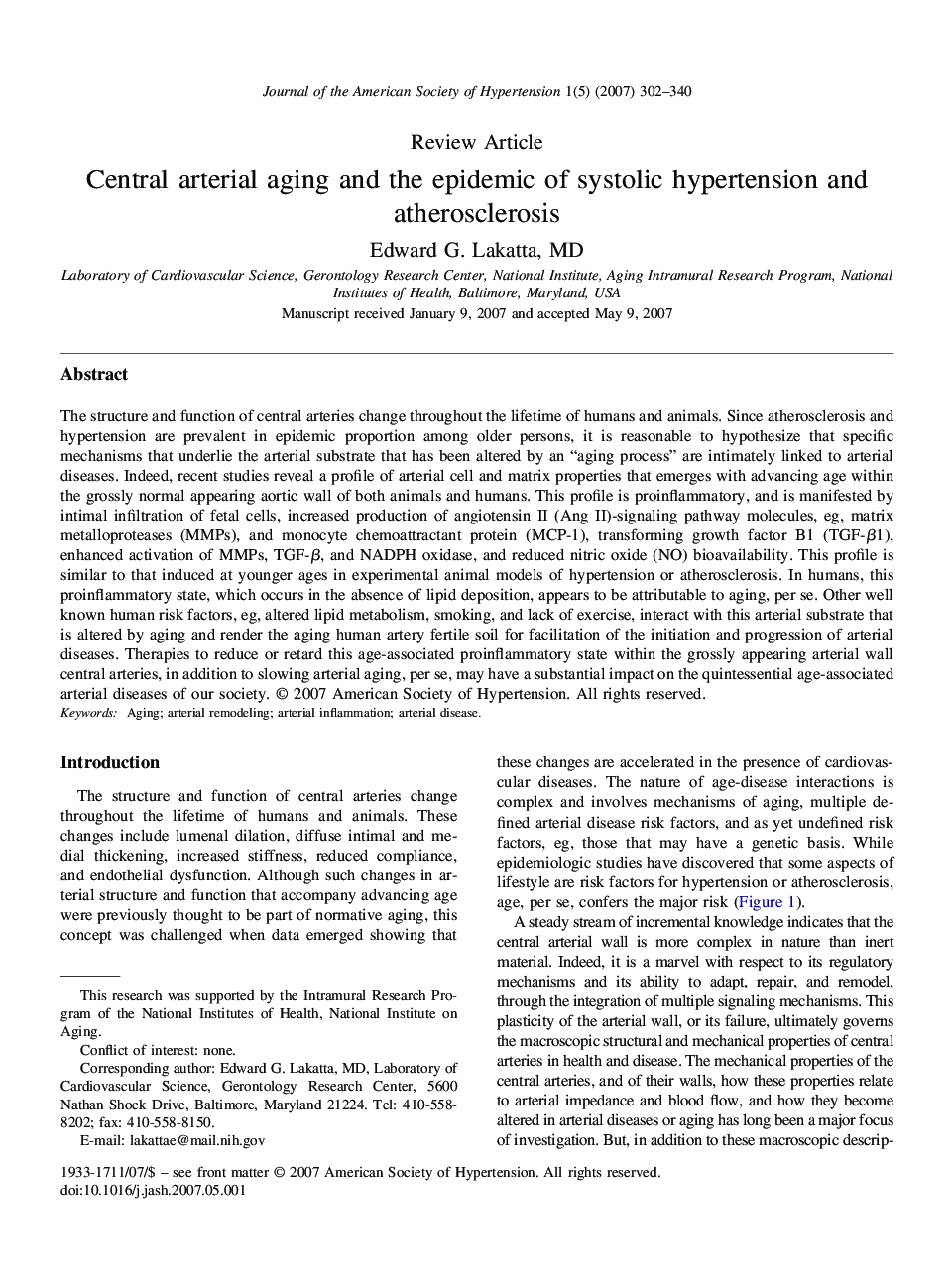| Article ID | Journal | Published Year | Pages | File Type |
|---|---|---|---|---|
| 2957356 | Journal of the American Society of Hypertension | 2007 | 39 Pages |
The structure and function of central arteries change throughout the lifetime of humans and animals. Since atherosclerosis and hypertension are prevalent in epidemic proportion among older persons, it is reasonable to hypothesize that specific mechanisms that underlie the arterial substrate that has been altered by an “aging process” are intimately linked to arterial diseases. Indeed, recent studies reveal a profile of arterial cell and matrix properties that emerges with advancing age within the grossly normal appearing aortic wall of both animals and humans. This profile is proinflammatory, and is manifested by intimal infiltration of fetal cells, increased production of angiotensin II (Ang II)-signaling pathway molecules, eg, matrix metalloproteases (MMPs), and monocyte chemoattractant protein (MCP-1), transforming growth factor B1 (TGF-β1), enhanced activation of MMPs, TGF-β, and NADPH oxidase, and reduced nitric oxide (NO) bioavailability. This profile is similar to that induced at younger ages in experimental animal models of hypertension or atherosclerosis. In humans, this proinflammatory state, which occurs in the absence of lipid deposition, appears to be attributable to aging, per se. Other well known human risk factors, eg, altered lipid metabolism, smoking, and lack of exercise, interact with this arterial substrate that is altered by aging and render the aging human artery fertile soil for facilitation of the initiation and progression of arterial diseases. Therapies to reduce or retard this age-associated proinflammatory state within the grossly appearing arterial wall central arteries, in addition to slowing arterial aging, per se, may have a substantial impact on the quintessential age-associated arterial diseases of our society.
